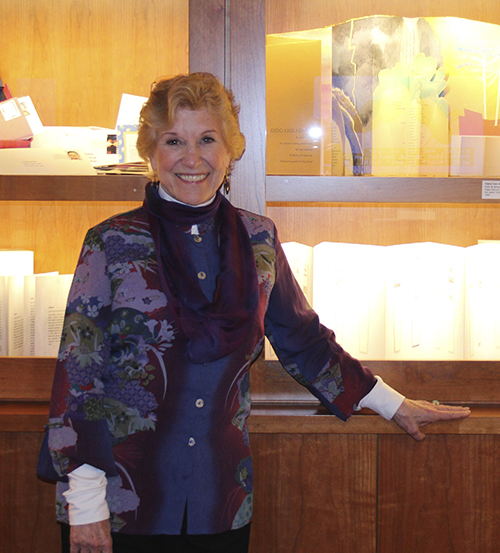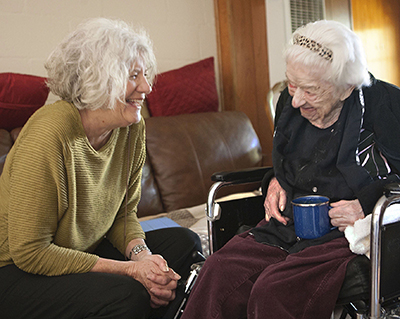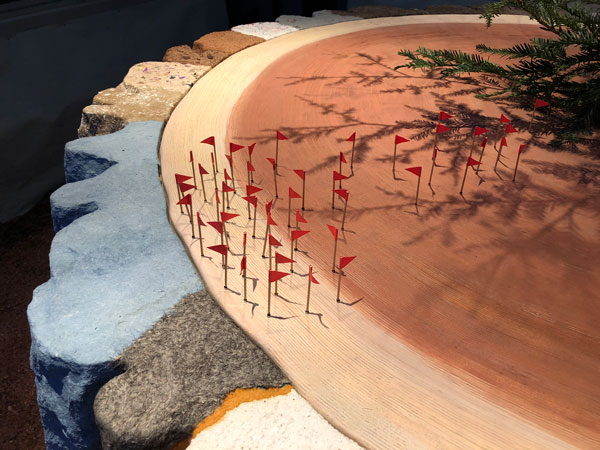Meet Cynthia Sears, Champion of the Arts

Cynthia Sears is a creativity explorer and the founder of the Bainbridge Island Museum of Art (BIMA) on Bainbridge Island in Washington State. She is known for her extensive support of artists, writers and cultural entities. Her collections include paintings and sculptures; antique and finely bound books; and some 1800 artist’s books, which comprise the Cynthia Sears Artist’s Books Collection at BIMA.
A pioneer in cultural support, Sears has collected and donated numerous works of regional artists to BIMA, creating a rich legacy of Pacific Northwest artistic production. Her wide ranging appreciation of the arts is demonstrated in BIMA’s community-centered mission and diverse programming which includes musical and theatrical performance; hands on educational activities; lectures, tours, and a wide array of community outreach events including an online series Artist’s Books Unshelved. This year BIMA is launching four generous biennial awards to support both regional artists and an artist making books. These BRAVA Awards (BIMA Recognizes Achievement in the Visual Arts) are in celebration of the tenth anniversary of BIMA in 2023, and a further expression of Sears’ belief in the value of the arts to human existence.
We conversed via zoom over a span of four months, discussing a range of subjects which touch on aspects of Cynthia’s life and thinking, including her work in radio and film, social and environmental issues, collecting and philanthropy, education and the arts.
Read Nanette’s interview with Cynthia Sears here.
Meet Kathleen Canrinus, author of The Lady with the Crown: A Story of Resilience

Interviewer Helen Gibbons writes: Bay Area native Kathleen Canrinus wrote The Lady with the Crown: A Story of Resilience to honor her mother, Dorothy. When Kathleen was 15, her mother suffered a traumatic brain injury in a car accident. After three months in a coma, Dorothy emerged partially paralyzed and cognitively impaired, upending the life of her family.
Kathleen’s memoir focuses on the relationship between mother and daughter, particularly its evolution during the 54 years between Dorothy’s accident and her death at age 99. There were plenty of challenges, but also lots of laughter and, oh, so much love. It’s a story I will enjoy reading again and again, finding some new insight or well-crafted sentence to relish each time.
You can read Helen Gibbon’s conversation with Kathleen Canrinus here and also in Entanglements.
EcoArt: Envisioning Strategies and Solutions

This engaging group exhibition of environmentally focused art continues in downtown San Rafael.
Exhibition: February 3–March 25, 2023
Gallery Hours: Thursday–Saturday, 1–8pm
Reception and Art Walk: March 10, 5–8pm
Artists’ Talks via Zoom: Tuesday, February 21, 6pm
Contact Kent or Nanette for the zoom link
Gallery 1337
Art Works Downtown
1337 Fourth St., San Rafael, California
Curated by Deanna Pindell
In collaboration with Women Eco Artists Dialog (WEAD).
Artists include: Lauren Elder, Michele Guieu, Juniper Harrower, Janette Kim, Kent Manske & Nanette Wylde, Daniel McCormick & Mary O’Brien, Zach Pine, Sharon Siskin, and Lisa Zimmer-Chu.
Nanette is published in A physical book which compiles conceptual books by various artists
This anthology, edited by Carley Gomez and Levi Sherman and published by Partial Press, contains about 150 conceptual books. Nanette’s contribution follows for your entertainment.
soul haiku (A slight volume of undisclosed materials found where least expected) Upon being lifted, the book notes the current environmental conditions. The book registers the touch of the reader—hand size, texture, temperature, care in handling. As the reader opens the cover to view the title page, the book peers into the reader’s eyes, reading the reader. The reader turns the page to find the first line of a haiku, which the book has written for this singular moment. Turning the page again, the book adjusts and connects to the reader’s history and mindset, offering the second haiku line, specific to this reader. The third page turn reveals the third line—a marvel of exactitude and insight which will resonate with the reader, once the book is closed and returned to its resting place. Afterwards, year upon year, when conditions are just about right, the poem will be remembered, considered, thought to be the original. Yet with each of these remembrances it will be new, revised to the reader’s current situation, although the reader will never find that book again.
